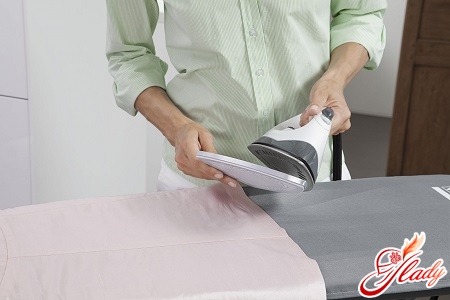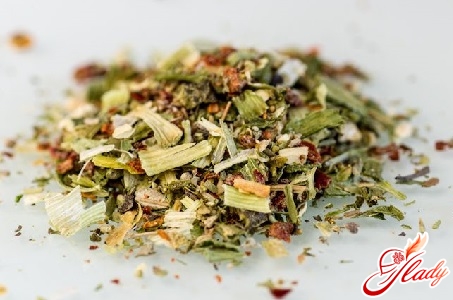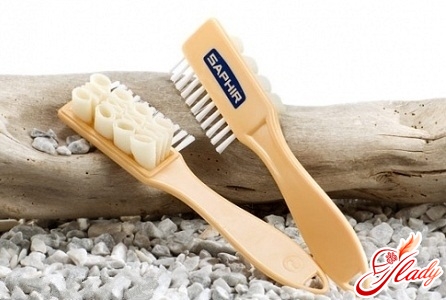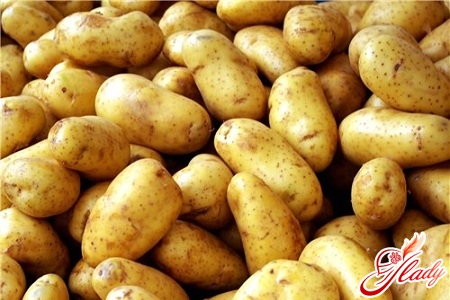 “Antoshka, Antoshka, let’s go dig potatoes!» The words of this children's song are known to everyone. But in order to dig potatoes, they must first be grown. In our country, potatoes have always been one of the main food products. It is not for nothing that people call them "second bread". Therefore, everyone who has such an opportunity, and, of course, desire, grows them. It should be noted that the yield of this irreplaceable vegetable crop in gardens and household plots is still very low. But the potential of the best varieties of potatoes is up to 700 centners per hectare, or even more. The reason is that the land loves skillful and careful care. The key to a high potato yield is the use of good elite varieties, as well as competent agricultural technology. How to grow potatoes to get a large harvest? What are the methods of growing them? This is what we will talk about in this article. The most competent and experienced vegetable growers spend much less time growing potatoes, but at the same time get a large harvest of much better quality than most other gardeners. Selecting varieties, planting potatoes, hilling – every vegetable grower has his own techniques and secrets of how to grow a good potato harvest.
“Antoshka, Antoshka, let’s go dig potatoes!» The words of this children's song are known to everyone. But in order to dig potatoes, they must first be grown. In our country, potatoes have always been one of the main food products. It is not for nothing that people call them "second bread". Therefore, everyone who has such an opportunity, and, of course, desire, grows them. It should be noted that the yield of this irreplaceable vegetable crop in gardens and household plots is still very low. But the potential of the best varieties of potatoes is up to 700 centners per hectare, or even more. The reason is that the land loves skillful and careful care. The key to a high potato yield is the use of good elite varieties, as well as competent agricultural technology. How to grow potatoes to get a large harvest? What are the methods of growing them? This is what we will talk about in this article. The most competent and experienced vegetable growers spend much less time growing potatoes, but at the same time get a large harvest of much better quality than most other gardeners. Selecting varieties, planting potatoes, hilling – every vegetable grower has his own techniques and secrets of how to grow a good potato harvest.
Soil for potatoes
To grow potatoes you need loose,fertile, slightly acidic soil. Soil preparation usually begins in the fall. The land should be cleared of weeds - dandelion, couch grass, sow thistle, and pests should be destroyed - mole crickets, click beetles, cockchafers and their larvae, Colorado potato beetle larvae. Then the soil is dug to the depth of a bayonet shovel. When plowing, it is plowed to a depth of 25-30 cm. Before this, it is advisable to add fertilizer to the soil - a bucket of rotted manure or compost, thirty grams of superphosphate, fifteen grams of potassium and phosphorus fertilizers are mixed per square meter. Nitrogen fertilizers are left until spring, because they dissolve very easily. If the garden has acidic and heavy soil, which can be determined by the weeds growing there - sorrel, horsetail, plantain, then another 300-500 g of lime or ash per square meter is added to the soil in the fall. There is no need to break up clods and level the dug soil, because large clods of soil retain snow better. Therefore, more moisture will accumulate in it, and the pests remaining in the soil will die.
Preparation of seed potatoes
Many gardeners ask how to growPotatoes from seeds. The best material for planting potatoes are tubers from a summer planting or two harvests, but you can also use regular tubers obtained from a single spring planting. When growing potatoes from tubers, before harvesting, you should mark the best bushes. After that, you need to select healthy tubers of the correct shape from them. If at least one diseased fruit is in the bush during harvesting, then it is better not to leave the rest of the tubers from this hole for planting. The selected tubers should be well dried, and then kept in diffused light for one and a half to two weeks for greening. For this purpose, potatoes are poured in one or two layers, periodically turning them over. When all the pulp from its surface to the middle of the tuber has a greenish color, greening can be completed. These tubers are stored until spring without sorting. It should be remembered that such tubers cannot be eaten by yourself or fed to livestock, because they contain solanine, a poisonous substance. If you want to get an early potato harvest, it should be prepared long before sowing. Three to four weeks before planting, potato tubers should be placed in warm, lighted rooms for germination. Potatoes can also be germinated in boxes with wet sawdust, which are placed in a room with a temperature of 12-14 ° C. During this period, sprouts begin to form and the root system develops. Potatoes can also be germinated in polyethylene bags, in which holes must be cut for air circulation. The bags are hung in a light, warm room at a low height. In this position, all the tubers are illuminated evenly, so there is no need to move them. This prevents the sprouts from breaking off.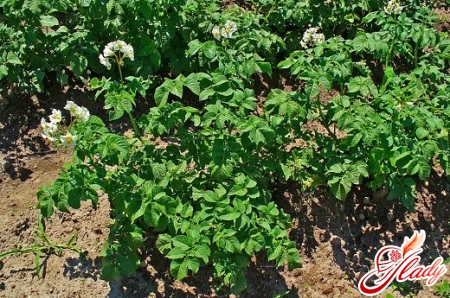
Growing seedlings and the potato itself
After the tubers have sprouted, they can be usedstart growing seedlings. This is done in boxes or in thick paper bags filled with soil. The seedlings should be kept in a dark, cool room with an air temperature of 10-12°C until shoots appear. When shoots appear, the seedlings should be moved to a bright place, and they can be planted in the ground as early as mid-April. If frost suddenly hits, the plant is hilled with soil or covered with film. This method can be used to get potatoes as early as the end of May. To make it easier to care for potatoes, the area is marked out before planting or the potatoes are planted along a cord. The distance between rows should be 60 cm, and between potato bushes - 30 cm. Potatoes are planted at a depth of 6-10 cm when the soil warms up to at least 5°C. Before the first loosening or even during planting, nitrogen fertilizer is added to the soil. There is a practice of growing early potatoes from tubers with long sprouts. To do this, they are germinated for 30-40 days at a temperature of 12-14 ° C, in a dark room, periodically moistening them with water until long sprouts appear. For cultivation, take tubers with a large number of sprouts weighing 70-100 g. Such tubers are planted by pulling out the sprouts and sprinkling them with earth, due to which a multi-stemmed bush is obtained. Tubers are formed underground at each stem. This planting method allows you to save twice the seed material, and the harvest increases by one and a half to two times. This method of growing potatoes is used with good irrigation. The emergence of shoots can be accelerated by covering the planted areas with black film. The film is removed after the emergence of shoots. It can be left, but in order for the sprouts to grow outward, cross-shaped cuts must be made in it above each bush. This method greatly simplifies the care of potatoes, because under the film the soil moisture is retained longer and weeds do not grow.
Care of potatoes
Potato care should begin almost immediately.after planting. Many gardeners often make the mistake of postponing care until the first shoots appear. The fact is that the sprouting tubers in the soil constantly need access to air, which can only be provided by loosening. Moreover, many weeds emerge from the ground much earlier than potato sprouts. These weeds grow very quickly, consuming a lot of nutrients and moisture, which they take from cultivated plants. Thus, they oppress the potato, which, in turn, affects the size of its harvest. Therefore, it is so important to remove and weed young weeds, which die at the slightest damage from the teeth of a rake or harrow. It is much more difficult to fight rooted weeds. It is also necessary to loosen the soil after watering and rain, since a hard crust appears on the surface of the earth, which disrupts normal air exchange, which significantly delays the germination of potatoes. When full-fledged shoots appear, the soil needs to be loosened, simultaneously removing weeds around each bush, and not just in the aisles. On hard and dense soil, loosening needs to be done deeper. If there are leaves in the ground, they need to be lifted by hand. If there is a threat of frost, it is necessary to create a smoke screen for potato shoots. To do this, piles of weeds and dry branches are laid out on the leeward side along the edge of the garden and set on fire when the temperature drops sharply. If the garbage is very dry, then to create more smoke, it needs to be sprinkled with earth on top. Before frost, shoots, especially at night, can also be covered with earth. After the frost has passed, the soil is leveled with a rake.
Top dressing of potatoes
Potatoes are fed with bird droppings,diluted in water. To do this, dilute bird droppings in a large container filled with water halfway, at a rate of 80-100 g per square meter. After a few days, this solution begins to ferment, and after fermentation is complete, it is diluted with water in a ratio of 1:10. This solution is poured onto the soil around the plants at a rate of 1.5-2 liters per bush. Care must be taken to ensure that the solution does not get on the leaves, otherwise they will get burned. Potatoes can also be fed with liquid manure. It should be borne in mind that you need to feed with one thing - either bird droppings or manure. Excess in this case will not play into the hands of the potatoes. After feeding, the soil must be hilled or loosened. To obtain high yields of potatoes, it is necessary to water the soil regularly, because in the heat and drought the growth of the bushes stops, and the rains that fall after cause the tubers to become ugly and grow. Potatoes are watered in the evening, at the rate of at least two to three liters per bush. Watering should be done 3-4 times a week. Watering during flowering and tuber formation is very important. The day after watering, you need to loosen the soil with hand hoes. When caring for potatoes, you need to avoid damaging the tops, as this reduces the yield. Gardeners who do not know the peculiarities of potato growth are afraid of too much development of the potato bush. But in vain. Strong healthy tops, on the contrary, are favorable and provide a high yield of tubers. A drop in yield occurs when there is a lack of light or nitrogen in the soil. In order to correct these shortcomings, it is necessary to feed the plant abundantly with potassium sulfate or chloride and superphosphate, which promote the formation of the tuber. It should also be borne in mind that potato plantings are not placed in heavily shaded areas.
Hilling of potatoes
As soon as the tops have grown by 15-20 cm, you shouldproceed to hilling the plant. Use hoes to rake the soil to the tops so that a small mound forms around the bush, covering the lower part of the stem down to the leaves. Before hilling, it is useful to feed the potatoes with organic or mineral fertilizers. They should be scattered between the rows five centimeters from the stems. When hilling, these fertilizers are buried under the bush. For each bush, take fertilizers at the rate of: superphosphate - 5-6 g, potassium sulfate or chloride - 3-4 g, ammonium nitrate - 2-3 g. If liquid fertilizer is used as fertilizer, then dig shallow furrows in the middle of the rows, where the solution is added. Take two tablespoons of potassium and nitrogen fertilizers and four tablespoons of phosphorus fertilizers per bucket of water. Take 1.5-2 liters of this solution for each bush.
Fighting pests and diseases of potatoes
For the gardener during the potato growing seasonit is necessary to carry out the necessary measures to protect against pests and prevent diseases. Viral diseases cause great harm to potatoes. To combat this scourge, only healthy seeds should be planted. You can grow them on your own plot. To do this, after harvesting early crops, you need to destroy all diseased plants that were identified during the growing season. Fungal diseases pose the greatest danger. Therefore, for prevention, you need to carry out one or two sprayings - at the beginning of flowering, and then at the beginning of the bud appearance. Potato tubers should be monitored during storage, since a problem may appear in a couple of weeks after harvesting. The greatest danger to potatoes is the Colorado potato beetle. It itself, and its larvae, are very voracious. The damage to leaves they cause significantly affects the harvest. To combat the Colorado potato beetle, the plant is treated with biological and chemical preparations. Other methods of control are also used. Potato leaves and the soil around the bush should be checked regularly. Beetles, egg-laying and larvae are collected in a container containing kerosene or a saturated salt solution. Timely weeding, hilling and loosening also help in the fight against the Colorado potato beetle.
Cleaning and storage of potatoes
With proper preparation of tubers and competentCare for the soil and seedlings will ensure a good potato harvest. Summer plantings are collected in early autumn. The tubers from it are stored better, and begin to sprout only in April. It should be taken into account that the potato tuber is a living organism, in which physiological processes continue even after harvesting. They must be harvested carefully: you cannot throw them, you should carefully place them in bags or boxes. Caution is also needed during transportation. The storage temperature is gradually reduced, bringing it to 1-3 ° C. At subzero temperatures, potatoes can die, so it is unacceptable. At zero temperature, starch in potato tubers turns into sugar, which makes the tubers sweet. But this process is reversible, and the taste of the potato is restored if it is kept at room temperature for several days. Potatoes are stored in dark storage facilities with a relative humidity of 80-90%: basements, cellars, underground. In dry storage facilities, the weight of the tuber is lost. High humidity is also unacceptable. Therefore, the room must be well ventilated. Potatoes can also be stored in temporary storage facilities - trenches, pits, piles. Potatoes are also well preserved in them.





